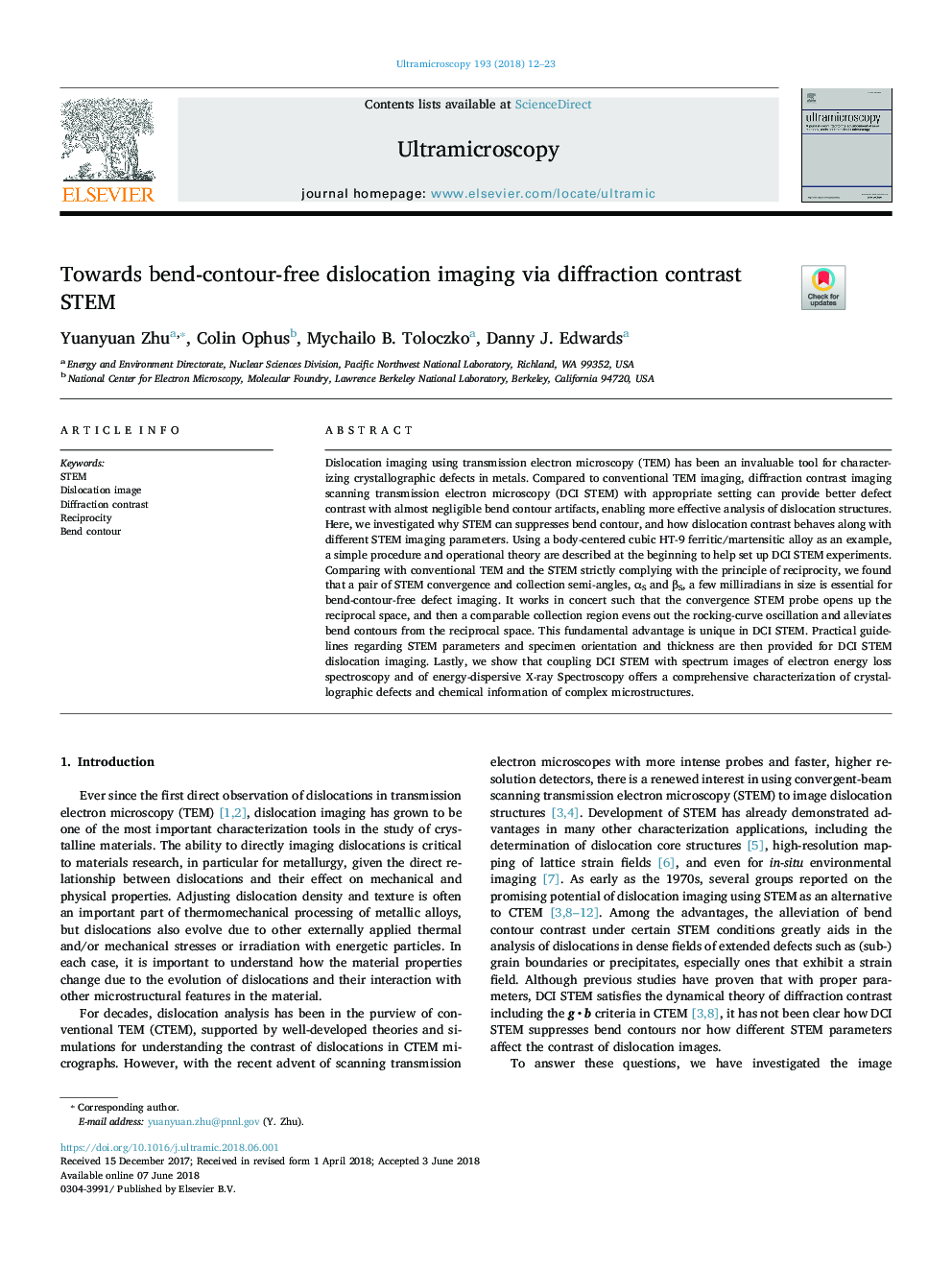| Article ID | Journal | Published Year | Pages | File Type |
|---|---|---|---|---|
| 8037620 | Ultramicroscopy | 2018 | 12 Pages |
Abstract
Dislocation imaging using transmission electron microscopy (TEM) has been an invaluable tool for characterizing crystallographic defects in metals. Compared to conventional TEM imaging, diffraction contrast imaging scanning transmission electron microscopy (DCI STEM) with appropriate setting can provide better defect contrast with almost negligible bend contour artifacts, enabling more effective analysis of dislocation structures. Here, we investigated why STEM can suppresses bend contour, and how dislocation contrast behaves along with different STEM imaging parameters. Using a body-centered cubic HT-9 ferritic/martensitic alloy as an example, a simple procedure and operational theory are described at the beginning to help set up DCI STEM experiments. Comparing with conventional TEM and the STEM strictly complying with the principle of reciprocity, we found that a pair of STEM convergence and collection semi-angles, αS and βS, a few milliradians in size is essential for bend-contour-free defect imaging. It works in concert such that the convergence STEM probe opens up the reciprocal space, and then a comparable collection region evens out the rocking-curve oscillation and alleviates bend contours from the reciprocal space. This fundamental advantage is unique in DCI STEM. Practical guidelines regarding STEM parameters and specimen orientation and thickness are then provided for DCI STEM dislocation imaging. Lastly, we show that coupling DCI STEM with spectrum images of electron energy loss spectroscopy and of energy-dispersive X-ray Spectroscopy offers a comprehensive characterization of crystallographic defects and chemical information of complex microstructures.
Keywords
Related Topics
Physical Sciences and Engineering
Materials Science
Nanotechnology
Authors
Yuanyuan Zhu, Colin Ophus, Mychailo B. Toloczko, Danny J. Edwards,
